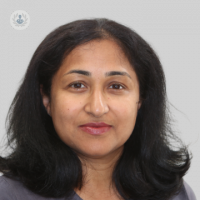An exploration of fertility: part 2
Escrito por:In the second article of a two-part series, distinguished consultant obstetrician and gynaecologist Dr Thanga Katimada discusses the lifestyle factors when couples should seek help for fertility and the best fertility treatments available.

When should couples seek fertility help?
If couples have been having unprotected intercourse 2-3 times a week for 12 months, with an 85% chance of conception, they should consider seeking preliminary investigations for potential subfertility. These investigations typically involve a pelvic scan, an ovulation test (which can be obtained over-the-counter), and a semen analysis. Additionally, if there are any risk factors for tubal disease, such as a history of STIs, endometriosis, or abdominal surgery, further testing for the fallopian tubes may be necessary.
For couples with known factors affecting fertility, such as endometriosis, previous STIs, ovulatory disorders, or issues with testicular or ejaculatory function, seeking a consultation earlier is advisable. Waiting for 6 months after trying to conceive may be reasonable in such cases.
How does age impact fertility and what can be done to preserve it?
Women are born with 2 million eggs in their ovaries. From this point on and even inside the mother's womb, these eggs begin to be destroyed. At puberty, there are 200,000 eggs. At 37 years this declines to 10-30, 000 and at menopause there are less than 1000 eggs in the ovary.
The quantity of eggs in the ovary does not have a direct impact on fertility, as long as ovulation occurs regularly. However, with advancing age, particularly beyond 35, the remaining eggs in the ovary are more likely to be genetically suboptimal. Fertilisation of these eggs raises the risk of miscarriages. Consequently, success rates for IVF treatment using a woman's own eggs also decrease with age, especially after 40 years of age.
What fertility treatments are available and how successful are they?
Treatment used for fertility depends on the cause. A third of couples who have a delay in conceiving, may not have any identifiable cause and this is called unexplained subfertility. Others may have a single or a combination of factors reducing fertility.
Infrequent or absent ovulation: The most common cause for this is polycystic ovary syndrome. Provided the fallopian tubes are open and the semen is normal, ovulation can be induced with medications such as Clomiphene Citrate or Letrozole. Hormonal injections containing FSH can also be used if the oral medications are ineffective. Adding metformin and or myoinositol may improve response to these medications. 70-80% of women will ovulate with a cumulative conception rate over 6 months of 67%.
Semen abnormalities: a small reduction in motility and concentration of the sperms can be overcome by a process called intrauterine insemination where the sperms are concentrated and deposited in the top of the uterine cavity to increase the concentration and availability of sperms to fertilise the egg when it enters the fallopian tube. This carries an 18% pregnancy rate per cycle and a cumulative pregnancy rate of 32%
Block in the fallopian tube: While there are surgical techniques to unblock fallopian tubes, these are not particularly successful and carry an increased risk of pregnancy in the tube. Currently, IVF treatment is the preferred option when tubes are blocked.
Combination of ovulatory and semen factors: Whilst IVF carries a better chance of successful pregnancy under these circumstances, ovulation induction with intrauterine insemination may be an option.
Unexplained subfertility: A combination of ovulation induction with intrauterine insemination is an option especially if the woman is less than 37 years of age. If over 37 years of age, IVF is a better option.
The success of IVF is dependent mainly on the age of the mother, hence the ovarian reserve and genetic quality of the eggs.
The overall live birth rate in the UK is 25-30% per cycle. The live birth rate per embryo transferred is 25% at 35-37 years and 19% per embryo transferred at 38- 39 years of age.
If you are concerned about fertility and would like to book a consultation with Dr Katimada simply visit her Top Doctors profile today.



